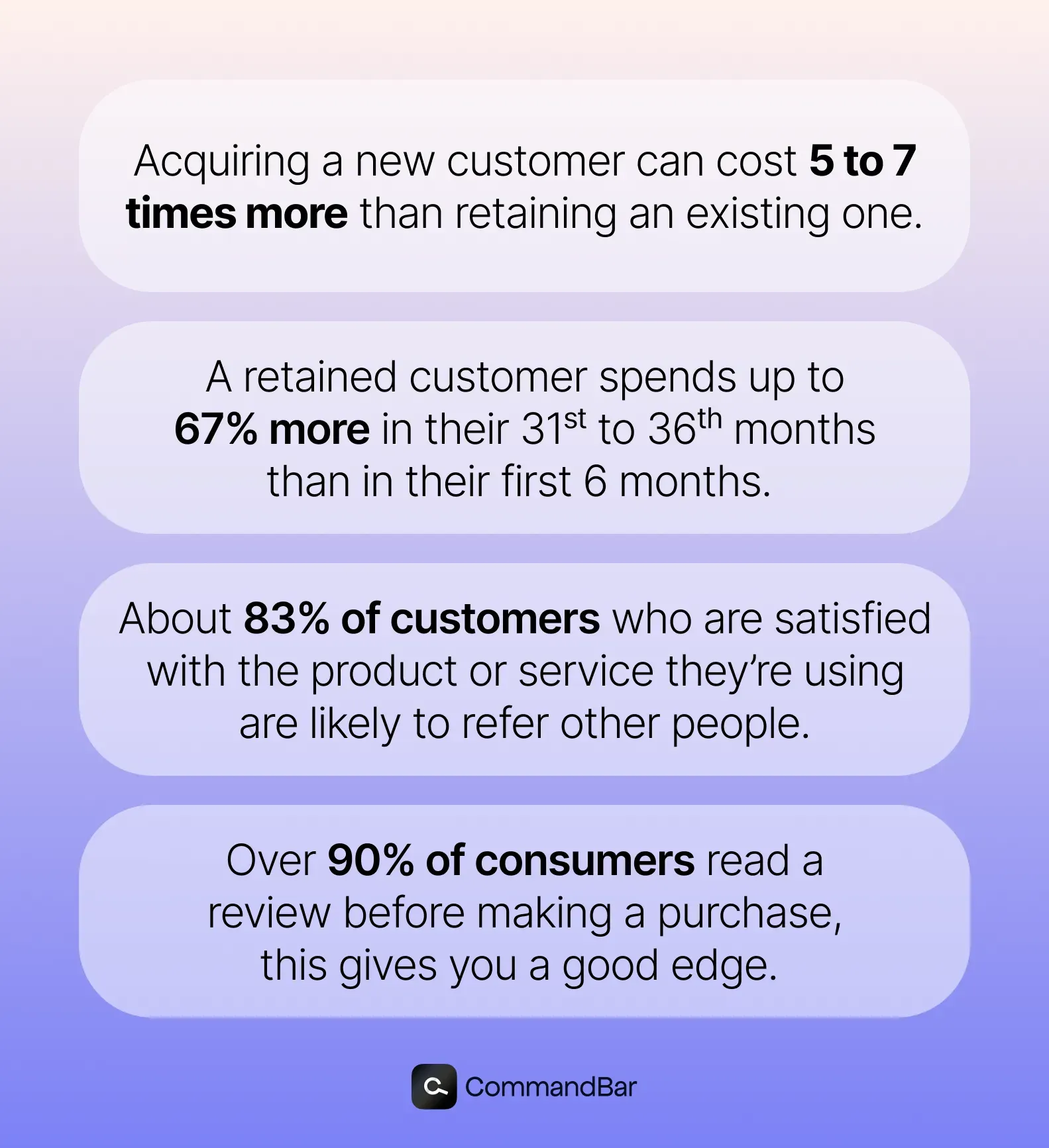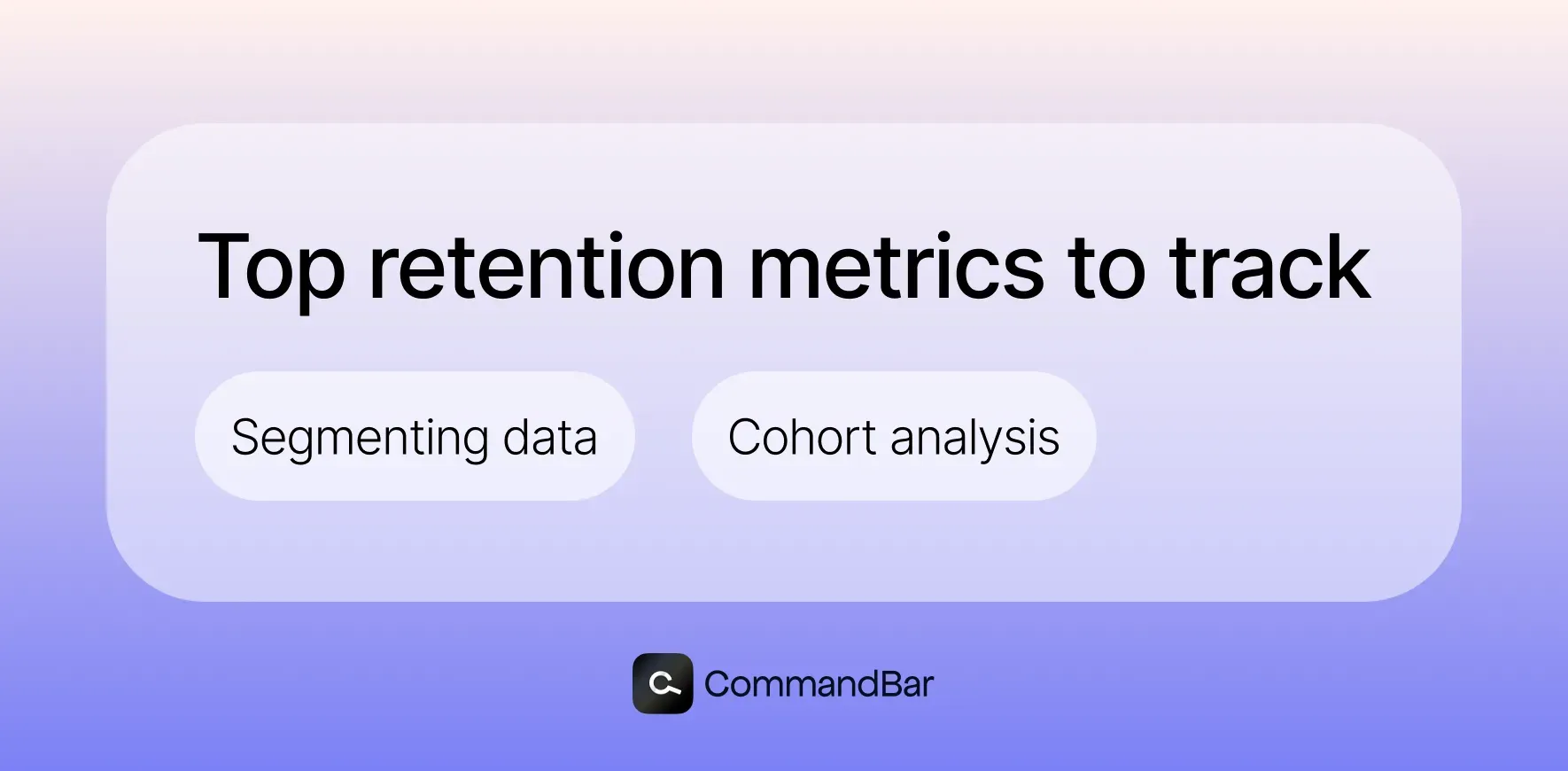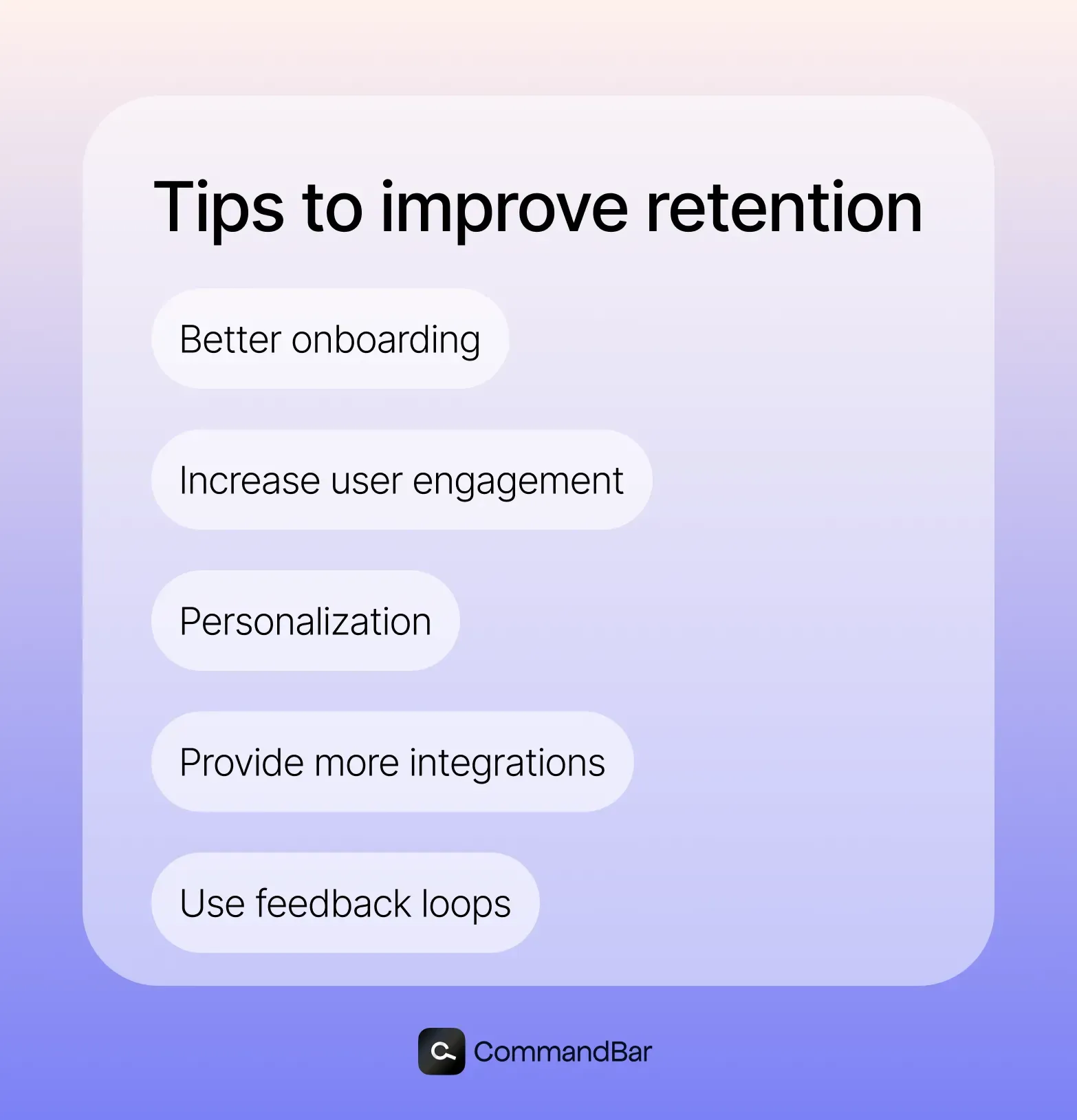Every team has to make decisions about which metrics to focus on. It’s about identifying the things to track that will most clearly correlate to your company’s long-term success.
I’d argue that retention should be at the top of that list. When companies keep a strong focus on boosting their retention (and employ the right strategies to do it), success usually follows.
Why does retention matter? Just look at the numbers

It’s more cost-effective. Acquiring a new customer can cost 5 to 7 times more than retaining an existing one. If your marketing and sales budget is tight, your limited funds are often best focused on creating a better experience for your current customers if your retention is currently low.
It leads to a higher lifetime value (LTV). The longer you can keep the average customer, the higher their lifetime spend goes. And this isnt just from sustained spending; the amount spent monthly typically increases the longer a customer has been with you.. For example, a retained customer spends up to 67% more in their 31st to 36th months than in their first 6 months.
You get better word of mouth and reviews. About 83% of customers who are satisfied with the product or service they’re using are likely to refer other people. And those referrals are 30% more likely to convert than a lead that comes through traditional marketing channels. On top of the direct referrals retained customers give you, they’re also more likely to leave a positive review. And since over 90% of consumers read a review before making a purchase, this gives you a good edge.
It looks good for investors. If you’re in the process of fundraising, high retention rates are one of the biggest green flags you can wave for investors. Better retention signals sustainable growth since you have a proven history of keeping the users that you bring in.
Analyzing retention data
There are a few key metrics to track to not only keep tabs on your user retention, but also to strategically plan to boost your retention. We recently did a deep dive on these metrics in a previous blog post if you want to give it a read, but here’s a quick rundown:
- Retention rate - The percentage of users that you retain in a certain period of time.
- Churn rate - The flip side of retention, or the percentage of users who stop being a customer during a certain period of time.
- DAU/WAU/MAU - The average number of users who use/sign into your platform on a daily, weekly, or monthly basis.
- CLV - The total number of revenue expected from a customer during their entire lifecycle with you.
- TTFV - The time it takes for a user to realize value from your product.

One thing we’re big about here at Command AI is to not just collect data, but to actually do something with it. For fear of sounding like a broken record, it’s what you do with all of these user retention metrics that really makes the effort worth it.
Here are a few helpful ways you can analyze and take action on this data.
Segmenting data
You can use your retention data to segment your users up into meaningful groups. You can divide your users up by things like demographics, behavior, or acquisition source and track retention on a segment level.
Noticing trends at this level can help you identify which factors have the biggest impact on your retention, either in a positive or negative way.
For example, a company might segment its users by industry to see which sectors have the highest retention rates. If users in the healthcare sector show higher retention, the company can tailor its marketing and product features to better serve this segment. Or on the other hand, they can see which industries have the lowest retention and invest some time into creating strategies to better engage these industries.
Cohort analysis
You could also do a cohort analysis, which is similar to segmentation, but your grouping users based on shared characteristics or behavior over a certain period of time.
This kind of analysis helps you identify any trends or patterns that are affecting your retention.
One example of how this may play out is if an app performs a cohort analysis on users who signed up during a promotional period. By tracking their engagement and retention over the next six months, the team can clearly see the promotion’s long-term effectiveness and use that insight to make better decisions for future campaigns.
Tips to improve retention

Better onboarding
Onboarding is one of the most critical moments in the entire user experience because it sets the tone for everything to come. Effective onboarding helps users quickly understand and start using the platform.
Giving users the tools they need to deeply interact with and learn the ins and outs of your platform from the very beginning makes it a lot more likely that they will quickly buy into the value and stick around much longer.
One company that nails their onboarding is Slack, who boasts a 90% average retention rate for their paid clients. Their onboarding is simple, clear, and engaging, making it easy for users to confidently use the platform quicker.
Increase user engagement
Think of a platform that’s really great, with all of the bells and whistles, but you find yourself only using it here and there for whatever reason. Now compare that to a platform that maybe isn’t as robust or impressive, but you use it all the time. Which would you be more likely to renew when it’s time to resign your contract?
Regardless of the features and nature of the platform itself, you’re going to be more likely to renew something that you use more. Simple as that.
So if you’re trying to boost retention, you want to employ tactics to get your users clicking around in your platform more often.
One effective strategy is to make the experience more interactive. Things like nudges with tips on how to use the platform, engaging product tours, and personalized announcements about brand new features can spring your users to action.
Personalization
Users are thrilled by (and increasingly expect) personalized experiences in every SaaS platform they use.
Whether you’re personalizing on a persona level (i.e. a different experience for marketers using your platform vs. customer success teams) or on a more granular level by using AI for deeper, real-time personalization, any investment in tailoring the experience to match the user clicking around on your platform is going to lead to more engagement, which, in turn, leads to better retention.
Salesforce does personalization really well, and that’s part of the reason they see above 92% user retention.
In addition to the new AI features that they’ve introduced recently with Einstein AI, a customized experience has long been at the core of their platform. From personalized dashboards to tailored reports to industry-specific solutions and lots of customization options, no two users’ Salesforce experience looks exactly the same.
Provide more integrations
In the past several years, integrations have become one of the biggest assets that a product can have. And a lack of integrations can also present the biggest obstacle to sales teams.
A wide network of integrations makes it easier for a product to snap more seamlessly into someone’s existing tech ecosystem. Even if it’s not a deterrent at the time that your user signs on, failing to continuously expand your network of integrations may nudge them to look for alternative solutions that better fit their needs.
Zapier is one of the champions of integrations, and that’s a massive contribution to their churn rate which is consistently under 5%. They currently connect with over 3000 apps, and they’re always adding more. This constant investment in expanding their connections with basically any app their users could ever need to integrate with helps the eliminate one highly possible reason for churn.
Use feedback loops
Users also want to be heard. No matter how great your relationship with them started out, one of the biggest indicators of how long they stay is your ability to adapt to their evolving needs. The most successful products keep really close tabs on emerging needs, new problems that have popped up, and where there may be a mismatch between expectations and reality.
One of the best ways to gather this information is by talking to your customers. You can pull information from in-app surveys, surveys sent via email, anecdotal information that your customer service or customer success team collects, or even conversation records from tools powered by conversational AI.
Retention is the key to sustainable growth
No matter how many new users you get, your growth in the long-term will always be tied to your ability to retain clients.
The most successful SaaS companies understand this deeply. They invest time and resources into building lasting relationships that drive growth, loyalty, and advocacy. This focus helps them ensure that they remain competitive and resilient no matter what happens in the market.

















